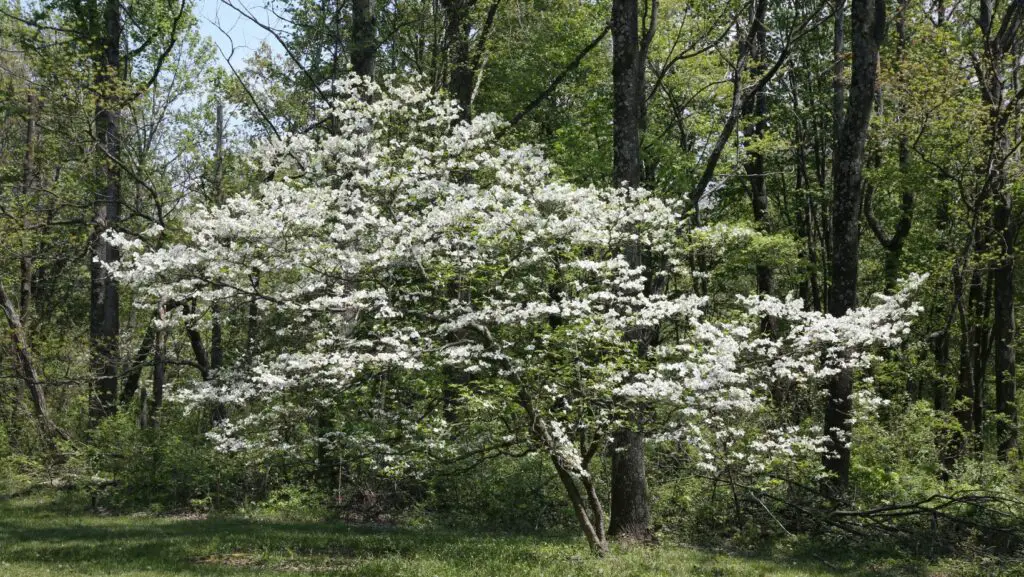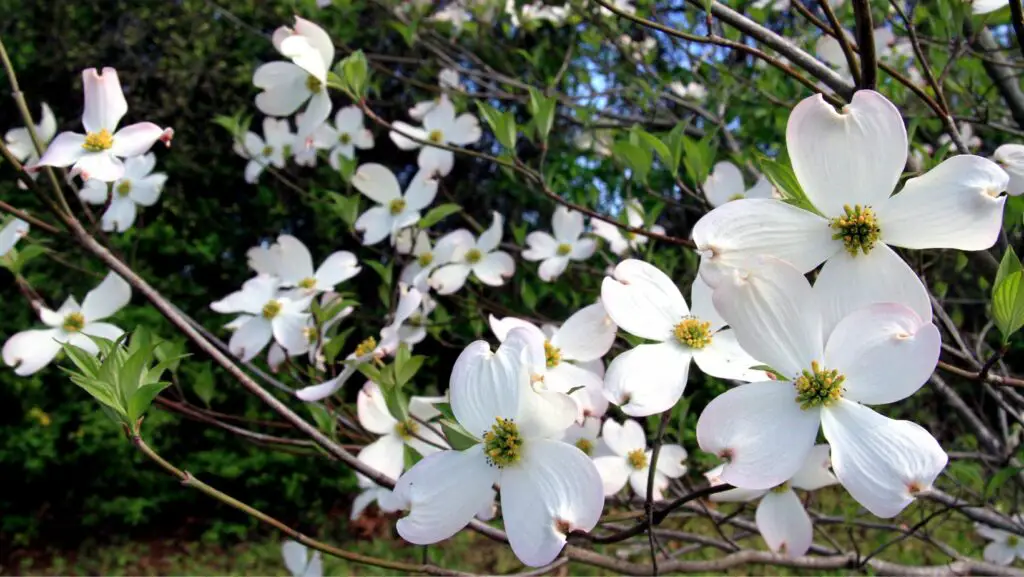
Dogwoods offer a decorative interest throughout the year thanks to their foliage, their flowers, and their fruits for some, but also by their wood often very colored in winter.
In this article, I have gathered for you all the information about dogwood shrubs, their main characteristics, and what you need to know to plant and grow them.
Characteristics of the dogwood tree
| Scientific name | Cornus spp. |
| Family | Cornaceae |
| Origin | United-States, China |
| Foliage | Deciduous or evergreen |
| Flowering | May-June |
| Rusticity | -20°C (-68°F) |
| Exposure | Sun |
| Soil | Normal, even a little calcareous |
Dogwoods grow in clumps of 1.50 to 4 m, or even more for some that develop into small trees. The upright branches grow in more or less regular clumps, and their coloring appears more intense in winter when they are bare.
The leaves are green, golden or panicled, and contribute to bring a luminous touch to the beds.
The simple flowers with 4 pointed sepals are generally large.
Some fruits are decorative, such as those of Cornus kousa ‘Nicole’, rounded, red and lumpy.
How to grow a dogwood shrub
Growing dogwood is relatively easy and can be done in a variety of ways.
The best way to start is by planting a small sapling or seedling in well-drained, humus-rich soil. Dogwood loves sunlight, so make sure to plant it in an area that gets a few hours of sun each day.
Water the sapling regularly, making sure to keep the soil moist but not soggy. Fertilize the tree once a year in early spring with a balanced fertilizer. In March, remove every other branch by cutting it off flush.
How to grow dogwood in a pot
You can consider growing in a pot, at least for a few years before planting in the garden; despite all the care taken, dogwoods are less vigorous in these conditions.
Use a 50 cm diameter pot, and repot every year, in a rich soil, with 1/5 of heather soil added.
Keep the soil very slightly humid at all times, especially in summer.
Where to plant a dogwood shrub
Plant in isolation, in a bed – knowing that some dogwoods have a clear tendency to sucker.
It is also possible to plant the shrub in a pot, as long as the pot is large enough to accommodate the shrub’s root system.
For a good winter result, combine the dogwood with grasses and do not prune it before spring.
Take advantage of the colored wood of dogwoods: mix for example species with red wood and yellow stems.
Our selection

Here is a list of my favorite varieties.
- Cornus alba, 2.50 m tall, with white flowers; ‘Aurea’, with golden yellow leaves in spring and bright red wood in winter; ‘Kesselringi‘, with purple leaves turning red in autumn and ebony wood; ‘Sibirica‘, with dull green leaves turning red in autumn and red wood; ‘Sibirica Variegata‘, with cream variegated leaves.
- C. florida, 2 to 3m high: ‘Rubra‘, very abundant deep pink flowers covering the entire shrub; ‘Rainbow‘, with large white flowers.
- C. kousa, 3 to 3.50 m high: ‘Nicole‘, with very large white flowers of 12 to 15 cm diameter, and red fruits; ‘Satomi‘, with smaller flowers, 8 to 10 cm, and pink.
- C. stolonifera ‘Flaviramea‘ or yellowwood dogwood, 2.50 m tall, with golden yellow wood in winter.
- C. sanguinea ‘Midwinter Fire‘, with yellow-green foliage turning ochre in autumn, and bright orange wood in winter.
- C. sanguinea ‘Winter Flame‘: ‘Anny‘ is a recent selection called Cornus fluo, because its wood is colored in winter with bright yellow, orange and red.
In a nutshell
Growing dogwoods doesn’t require too much work, but there are some important considerations. Make sure to provide plenty of light and water and to choose the right location and soil type for your tree.
When planting, take care to plant at the correct depth and water often during the first year. With a bit of attentiveness and care, you’ll have a beautiful dogwood tree in no time.

Hi!
I am the guy behind Theyardable.com. I grew up on a homestead and I am here to share the knowledge I have and things I learn while living in the countryside.
